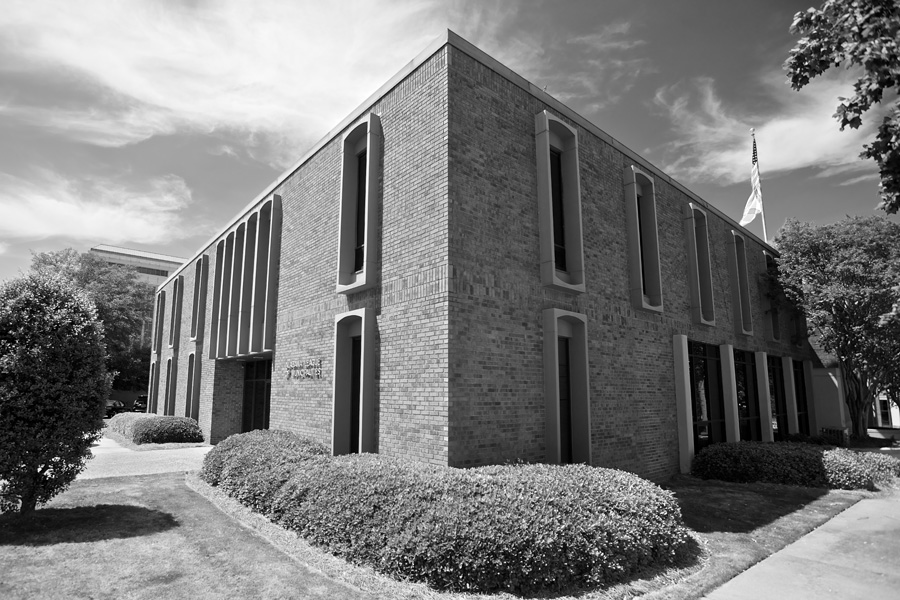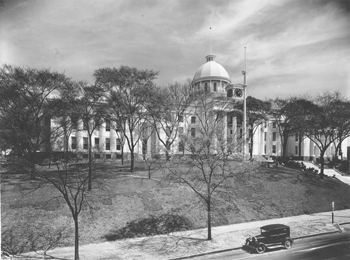About the Author: Lee Anna Maynard, PhD, is a freelance writer, editor and scholar currently based out of Augusta, GA, where she is on faculty with Augusta University. She received her PhD in English from the University of South Carolina and was an Assistant Professor in the Department of English and Philosophy for Auburn University Montgomery. She has served as the managing editor for a regional magazine and her first academic volume, which explores the role of boredom in the Victorian novel, was published in 2009.
Setting the Stage
In the early 1930s, America was a study in contrasts. Unprecedented advances in transportation, architecture, and communication were reshaping Americans’ concepts of the limits of the physically possible, while crippling economic conditions made many of these developments seem personally or individually unattainable.

Human flight gripped popular imagination, with Americans breathlessly monitoring the progress of pilots Charles Lindbergh, Amelia Earhart and others as they achieved ever-greater distances and faster flight times, crossing continents and oceans. Flight innovation and invention led to the military’s investigation of a dirigible fleet and adventurers’ interest in taking hot-air balloons to new heights. The public’s intoxication with daring feats of transportation wasn’t limited to long-distance flights: whether soaring at airborne speeds exceeding 300 miles per hour or rocketing along the hard sand of Daytona beach at 272 miles per hour, daring aviators and record-setting drivers were shocking and delighting a nation not far removed from the days of horse and buggy.
Like horse transportation, traditional commercial architecture was overshadowed – literally – by the cityscape-changing monuments of the 1930s. Awe-inspiring skyscrapers of vertigo-inducing heights set world records of their own, with the Chrysler Building and the Empire State Building entering profoundly into the American consciousness. (After all, Fay Wray’s kidnapping wouldn’t have been half as dramatic without King Kong’s being swarmed by a squadron of biplanes as he scaled the formidable Empire State Building.)
Though silent-movie king Boris Karloff and clown princes Charlie Chaplin and Laurel and Hardy held their own in the 1930s, “talkies” such as King Kong (1933) were box-office gold, as was anything starring the adorably precocious, corkscrew-curled Shirley Temple or the sultry Marlene Deitrich. Songs like “The Good Ship Lollipop” and Gershwin’s “Summertime” could be heard on movie- and theater-goers’ lips, while the stirring yet vocally challenging “The Star-Spangled Banner” was officially designated America’s National Anthem. Walt Disney’s iconic mouse made his debut at the beginning of the decade; meanwhile, America’s favorite “girl detective,” Nancy Drew, first unleashed her insatiable curiosity in bestselling mystery novels. The board game Monopoly provided another new entertainment option, where being a high-roller who gambles properties with play money perhaps gave participants a way to cope with the much more painful stings of the Great Depression.
On the heels of the stock market crash of October 1929, the nation had plunged into the worst economic crisis in its history, and the decade-long belt-tightening that followed reflected staggering 25 percent unemployment rates and dramatically increased homelessness. Cash-strapped districts could neither collect taxes nor pay teachers and other staff; as a result, tens of thousands of public schools failed to open and many of those that did offered shorter school terms and could ill afford the groundbreaking new Dick and Jane books for young readers (or any other textbooks, for that matter). Education thus became a luxury, and survival became, for many, a constant struggle. The unlucky confluence of drought and erosion through the middle of the country created the Dust Bowl, displacing not just farmers and their families but entire communities. In response to these crises, President Franklin Roosevelt’s New Deal policies sought to generate jobs, stabilize the country’s rapidly declining financial health, and improve the quality of life for many Americans. Some of his administration’s creations, most notably the Tennessee Valley Authority, the Rural Electrification Administration, and the Civilian Conservation Corps would have far-reaching impact in Alabama.
Alabama in the 1930s
Alabamians suffered through the Depression, actually posting higher unemployment rates than any other southern state and boasting the dubious distinction of Birmingham’s being arguably the hardest-hit city in America, with its full-time workforce plummeting from 100,000 to 15,000. In the span of only a few months in 1933, security personnel of the Alabama lines of the L&N railroad ejected more than 27,000 stowaways from their freight cars. The situation in Alabama was desperate.

At the beginning of the decade, Alabama’s population exceeded 2.6 million, with the vast majority (nearly 2 million) of those people classified by the 1930 federal census as rural dwellers. Cotton farms, hit hard by the boll weevil for years, numbered over 200,000, and more than 70 percent of those farms were worked by tenant farmers. The hardscrabble life of tenancy was made even more fragile by the advent of the tractor. Tenant farmers could afford mules with which to reasonably cultivate modest acreages, but the tractor, which came to symbolize a progressive, scientific approach to farming, was priced beyond the reach of most tenant farmers and could cover more acreage with less personnel. Though the mule still dominated the landscape in the early 1930s, mechanized farming was making serious inroads and jeopardizing sharecroppers’ and tenant farmers’ livelihoods.
Even if the tractor was not yet used extensively, the automobile was a common and unremarkable sight churning up dust and gravel on Alabama’s city and country roads. Though some families still travelled to church and town in horse-or mule-drawn wagons, farmers and city-dwellers alike embraced the utility and convenience of the auto. The capitol city of Montgomery offered an even more exotic transportation option via light rail, the progressively named Lightning Route trolley system, which could carry passengers from the city center to suburban neighborhoods.
Rural electrification was well underway, and the New Deal programs of the Rural Electrification Administration and the Tennessee Valley Authority brought lights to farms and recreation areas to the state even while they changed the face of the land with dams and new lakes where homes, cemeteries, and small towns once stood. Alabama was changing, technologically and geographically. Politically, though, change seemed impossible, at least for local governments.
Political Climate Intensifies
Although the fingers of progress were slowly extending further into the state, lighting homes and providing faster transportation, many Alabama politicians and their constituents still clung fast to political power structures implemented before the Civil War and, to their thinking, unprofitably disrupted by Reconstruction. From the latter decades of the 1800s on, mistrust of recently enfranchised African Americans had led to gerrymandering voting districts, restructuring bureaucracies to make many positions appointed rather than elected, intentionally obscuring ballots, and outright stealing the votes of African Americans. At the turn of the twentieth century, not content with these scattershot approaches to disenfranchisement of black voters, the Alabama legislature called a Constitutional Convention attended by 155 (white, male) delegates who, in the words of their president, John B. Knox, sought to “establish white supremacy in this state … [but] by law – not by force or fraud.” Working together to meet this goal, convention delegates generated systematic methods of disenfranchisement.
Poor white voters, however, were of just as much concern to many wealthy, powerful Alabamians of the early twentieth century as African-American voters. Thus, the newly codified eligibility requirements for registering to vote and casting a ballot eliminated potential voters along class as well as racial lines. Proposed voting prerequisites of longer-term residency, land ownership, and a rather high minimum personal financial worth – along with annual poll taxes equivalent to close to a week’s wages for industrial or agricultural laborers – effectively rendered tenant farmers and factory workers of any race virtually unable to participate in state democracy.
Fear of how less-wealthy or less-educated Alabamians might vote further shaped the newly constructed constitution: as a second level of defense beyond the restrictive eligibility requirements, delegates took advantage of the opportunity to divest local governments of their capability to implement changes in their towns or counties without first gaining authorization from the state lawmakers. Raising money for schools, roads, or local improvements likewise would become a matter of state control.
In 1901, the Alabama Legislature ratified this new state constitution, firmly cementing power in the state capital. As a result, local officials were unable to resolve hometown issues simply or quickly. With their hands tied by the 1901 Constitution, they had to wait for state legislators to consider and approve (or reject) their requests. The advent of the Great Depression only made this bad situation worse: in times of national instability and unrest, the breakdown of services and governance on the local level could create dangerous domino effects. Local leaders needed some way to regain even a portion of the power and self-determination their counties and towns lost with the ratification of the 1901 Constitution, and the tremendous pressures of the Depression created a climate ripe for municipal leaders to band together in that effort.